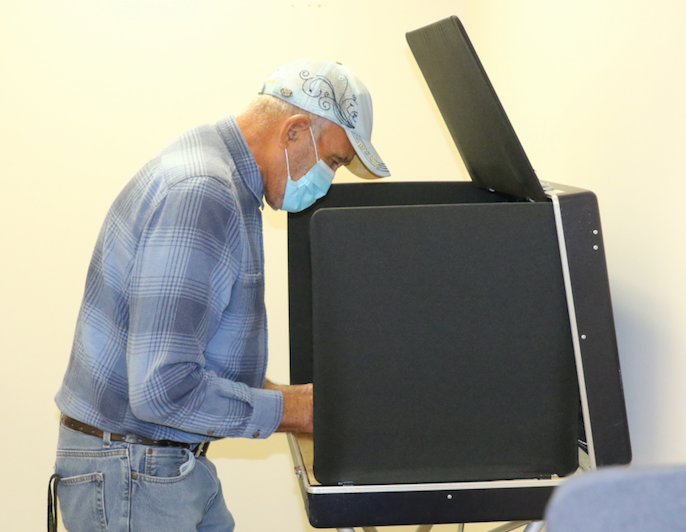Mining has a lasting impact
Published 6:00 am Wednesday, November 11, 2020
|
Getting your Trinity Audio player ready...
|
Residents of Buckingham County are growing more and more concerned that exploratory gold drilling by Canadian-based company Aston Bay Holdings could lead to the establishment of an open-pit gold mine, paving the way for decades of environmental impacts.
In September, the Buckingham Board of Supervisors and Planning Commission discussed Aston Bay’s exploratory core sampling along a potential gold vein near Warminster Church Road. The company’s operations went under the county’s radar for years until officials discovered the drilling, which is not on the list of permitted uses in an A-1 Zoning District.
Although some officials were excited over the potential mining and even went as far as saying they hoped Aston Bay would apply for a mining operation in the county, the company was told to cease operations. But now county officials are trying to decide if the core sampling can continue.
Many citizens fear this could be the first step toward the establishment of a gold mine in Buckingham, and some have even visited mining towns in other parts of the country in order to see what the future could look like for the county.
Paul Barlow, who lives at the end of Pond Road in Buckingham, said he was visited a year ago by two Canadian geologists not affiliated with Aston Bay who asked to take samples from his creek in order to trace back the gold vein.
Although the gold found on his property was microscopic, Barlow asked the gentlemen what they would have done should significant gold have been discovered. The two men, according to Barlow, stated open-pit mining would likely have been the answer, referencing the Haile Gold Mine located in Lancaster, South Carolina, as an example.
Concerned about the nearby gold exploration, Barlow decided to take a trip to the Town of Kershaw, just outside the Haile Gold Mine. He arrived Wednesday, Oct. 28, and stayed there for three days and two nights to speak with locals and learn more about how the recently reopened mine had affected the area.
The Haile Gold Mine operated for the majority of the 1800s and part of the 1900s until the effects of World War II shut operations down. The mine reopened in 2017 and is now purported to be one of the largest gold mines in the eastern United States.
Barlow said as he made his way to the gold mining town he expected to find El Dorado. Instead, he discovered what he described as a defunct community not unlike a ghost town.
Barlow said during his trip he learned that as the mine expanded outward Haile bought up the surrounding houses and properties for buffer zones and land to store equipment.
“It was hard to find a lived-in house near the mine,” he said.
Barlow said as Haile continues to find new gold veins using helicopters and sonar technology, the mine expands to buy up more houses. He claimed those that don’t want to sell their property for expansion of the mine see their surrounding land bought up around them and leveled.
And the lived-in homes around the mine, he said, are subject to round-the clock noise and light pollution caused by 24-hour mining operations, not to mention the smell of smoke.
The environmental impact of open-pit mining is a great concern to Barlow and others. According to a September article by The State’s Sammy Fretwell, Haile officials pledged to run a safe operation when the mine was reopened, but state regulators slapped the mine with $11,200 in fines after discovering the release of thallium over the legal limits.
Thallium, a naturally-occurring byproduct of refining heavy metal sulfide ores, was used in the past to make rat poison.
In the article, Fretwell writes that the Department of Health and Environmental Control also issued an enforcement notice in 2019 over violations of air pollution control rules, listing a minimum of five alleged violations of federal law and multiple state violations including a failure to limit mercury emissions.
In a 2015 article titled “Gold legacy haunts Montana,” Fretwell discusses the now defunct mining operations Montana communities continue to see the environmental impacts of today, citing that state and federal taxpayers had spent a minimum of $40 million to clean up environmental issues caused by four gold strip mines shut down in the 1990s, wreaking such havoc that the state effectively banned open-pit gold mines two decades ago.
Derf Johnson, staff attorney with the Montana Environmental Information Center, said Friday, Oct. 6, that officials should be skeptical of gold mining companies and tread carefully when considering allowing mining operations in the county.
“Mining companies will often exaggerate the potential for economic benefits associated with the mine and will downplay potential environmental consequences,” Johnson said. “They have a playbook that they operate with, and mining companies are becoming very sophisticated and writing public relations campaigns that talk a lot about all of the benefits and downplay a lot of the negative impacts associated with hardrock mining.
“Often what we see with mining projects is a short-term economic benefit in terms of job creation and in terms of potential tax base, but long term environmental consequences that will in many cases outweigh any of those economic benefits.”
Johnson said some consequences of gold mining can include acid mine drainage, the outflow of acidic water from a mining site that is often referred to as “perpetual pollution” that must be treated, pretty much, forever.
Bonnie Gestring, northwest program director for Earthworks, a nonprofit organization dedicated to protecting communities and the environment from the adverse impacts of mineral and energy development, specializes in hardrock mining issues.
“When it comes to gold mining, local decision makers should be concerned about the impacts to water,” she said Friday, Nov. 6. “That’s the most common and costly impact. Every major, open-pit gold mine in Montana resulted in water pollution, causing harm to downstream water users, such as private landowners, businesses, ranchers, community drinking water supplies and fish and wildlife habitat.”
Bob Guild, the conservation chair for the South Carolina Chapter of the Sierra Club, said open-pit gold mines, while initially attractive, can produce a variety of long-term problems well after the mine is gone.
“What happens is in the long term after the gate is locked and the mining company walks away, the pollution continues from all of the disturbance that’s been created from that short window when the gold rush is on,” Guild said Friday, “And what we find is open-pit gold mines all over the east just like in the west have been turned into Superfund waste sites where there’s no one taking responsibility for the abandoned mine.”
Guild said it is critical that localities have financial insurance available for use by the environmental authorities of the state that can be dipped into continually to pay for long term management of the pollution site, and that officials in the west have said it’s best to plan for 100 years of wastewater treatment funds to manage the environmental devastation.
Guild highlighted mines often function in a “boom and bust” format when it comes to open-pit gold mining, with short-term benefits that go away very quickly.
Johnson encouraged localities considering the implementation of a gold mine to do independent, objective analyses to look at the specific geochemistry associated with the ore body, to look at mine plans and the engineering surrounding them and to have those plans evaluated by people who are not associated with the mining company and know what they’re talking about.
“We would be wise to consider the long-term impacts on our environment and our health when making a decision on potential mining operations in Buckingham,” said Friends of Buckingham President Chad Oba.
When asked about mining plans in Buckingham County, Thomas Ullrich, CEO of Aston Bay, said Monday, Nov. 9, the company would be withholding any comments on the gold exploration until the issue is properly resolved.
He did, however, address the high levels of uncertainty involved in the project.
“Less than a few percent of exploration programs make the grade as a potentially viable project, and much more study is still required,” Ullrich said. “It is just too early to comment intelligently on any possible future mine here.”
Barlow said he came to Buckingham after retiring for peace and quiet. Now, he’s concerned open-pit mining would degrade the quality of life in Buckingham County.
“And it’s going to be right on my backdoor,” he said.





